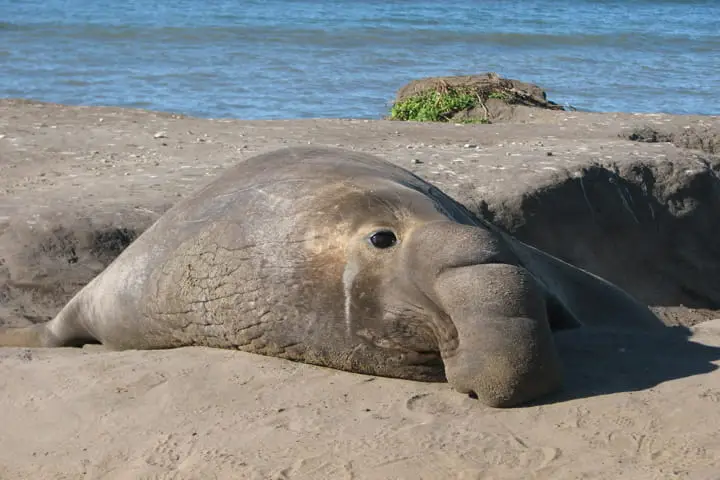The huge body size the male northern elephant seal aspires for is reflective of not eating to live but eating to mate. As per a report in sciencenews.org, physical bulk is essential for the males to be able to pass on their genes to the next generation and for that they are willing to take risks, even court death to keep up their eating spree.
The details of the study published in the Royal Open Science brings to focus the distinct difference in the way and the location of feeding between the males and females and how mating directs these choices.
Video:
To begin with the male and female northern elephant seals or Mirounga angustirostris differ physically since the latter weigh hundreds of kilograms while the former is three to seven times larger. Intrigued by this ecophysiologist Sarah Kienle at Baylor University in Waco, Texas decided to study how this considerable difference in physical attributes affects their eating habits.
Kienle and her team for a long-term ongoing project for monitoring these animals at California’s Año Nuevo State Park had fastened satellite and radio transmitters and depth loggers from 2006 to 2015 on more than 200 seals. Collecting data of their fat stores and complementing it with data on their location and depth, the researchers were able to arrive at where and how they forage and how this decides their weight and size.
The research revealed that the males and females hunt at non-identical places with females preferring stalking prey deep in open ocean while the males opt for feeding constantly in shallower nearshore habitats. This choice enables the males to amass six times the mass as females while taking in four times the calories.
The flip side of this made the males vulnerable as they were six times more likely to die as compared to females while eating. “I could have told you that from just putting out instruments on males, that it was a 50 percent chance whether or not I was going to get that instrument back. And that’s not the case for females,” remarked Kienle.
Unable to zoom in on the reason for the higher death rate, Kienle suggests predation since the continental shelf where the males feed has great white sharks and orcas. As compared to deeper waters, this shelf has more fish, plankton, and other creatures, thus apt for hungry sea lions and seals.
Vancouver’s University of British Columbia zoologist, Andrew Trites, who was not part of the study observed that mammal-eating predators too must be aware of this. “That’s where the dinner bell is ringing all day long,” he remarked.
Also read: Scientists use smart Seals to reveal secrets of the Antarctic
For the males the risk is beneficial. While both sexes achieve sexual maturity by 3 to 4 years, the females during the 20-year life span, have a pup every one or two years, the males meanwhile who live half the age of females, and achieve weight in later stage of life. They can have a mating monopoly when they are big to frighten or fight other bulls.
This crucial polarity is what spurs diverse feeding habits.
Summing up, Trites referring to the males as “the ultimate gamblers”, avers: “If you’re a male, then you’re going to roll the dice. And it’s all or nothing because the payoff is huge.”




















